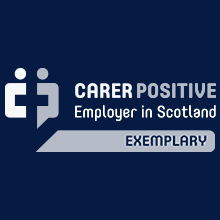Oral ulceration can occur in children and young people for the following reasons:
- Viral infections; herpetic stomatitis, Varicella Zoster (Chicken pox or Shingles), hand, foot and mouth disease, herpangina, glandular fever, HIV
- Recurrent Aphthous (oral) Stomatitis (RAS)
- Trauma
- Bacterial infections; necrotising gingivitis, syphilis, TB
- Fungal infection
- Cutaneous disease: lichen planus, pemphigus, pemphigoid, erythema multiforme, dermatitis herpetiformis, linear IgA disease, epidermolysis bullosa.
Recurrent Aphthous Stomatitis (RAS)
RAS is very common in childhood and usually not associated with other conditions. It is a clinical diagnosis of exclusion and can present in three forms:
- minor (most common, affecting the non-keratinised mucosa only)
- major
- herpetiform.
The ulcers can range in size (0.5 to >10mm) and duration (1-12 weeks).
Assessment
- Ask about location/site of ulcers, size, duration, symptom free periods, exacerbating and relieving factors, bowel problems, skin/genital blisters/ulceration.
- Dietary triggers: tomatoes, spicy food, carbonated drinks. Ask the patient to complete a diet/ulcer diary for 4 weeks
- Physical triggers: trauma, recent viral illness, lethargy/energy levels, height and weight disruption.
- Stress: any recent major life events, problems at school.
- Family history: parents, carers or siblings with similar oral ulceration history.
- Clinical photographs, if appropriate, are useful (include a sizer if available) and can be attached if an onward referral is necessary.
PLEASE SEE PRIMARY CARE MANAGEMENT FOR DETAILS OF INVESTIGATION AND TREATMENT.
C.M & P.G, H.C 22-01-24
Who to refer:
Please refer:
- any patient that has red flags (ulcer present for more than 3 weeks duration, struggling to maintain oral intake, involuntary weight loss, faltering growth, etc.)
- any patient where there is a strong suggestion of organic disease, or repeated attendances at practice or A&E
- ulceration with high suspicion of traumatic aetiology (refer to patient’s dentist)
- any ulcer that has not resolved after 3 weeks for specialist assessment (ref to Paediatric Dental Team, Lothian Oral Health Service)
- patients who also have genital ulceration
- patients with abnormal tests as outlined in Primary Care Management.
Who not to refer:
Patients where:
- no red flags exist and there is shared understanding with acceptance between family and healthcare provider, primary care assessment, investigation and simple treatment may well suffice.
- all tests are normal, and patient’s symptoms have improved with simple treatment.
How to refer:
- health visitors/school nurses should first refer to GP/primary care team/dentist
- for oral ulceration restricted to the oral cavity where additional tests have ruled out a systemic cause for the oral ulceration – refer to Paediatric Dental Team in the Lothian Oral Health Service.
- for ulceration with systemic problems please refer to general paediatric services at RHCYP or St John’s Hospital.
Please refer using SCI-Gateway – including ‘Advice only’ if this is more appropriate.
Viral Infections
When oral ulceration occurs with a fever, it is likely to be of a self-limiting, viral aetiology.
Treatment
- Reassure, advise routine analgesia, rest and soft diet until the ulcers have resolved.
Recurrent Aphthous Stomatitis
Investigations
For patients with persistent, recurrent ulceration, a FBC and haematinic screen (ferritin, B12 and folate) are suggested as first line investigations. Where these prove normal, you may want to consider the following depending on the clinical presentation:
- C&E, LFTs, glucose
- ESR and CRP
- Coeliac screen (anti-tTG)
- TFTs
- Faecal calprotectin – only where there is a clinical suspicion of Inflammatory Bowel Disease
- If genital ulceration is also present, please seek specialist advice: HLA typing (HLA B51) testing may avoid the patient having to undergo repeat phlebotomy.
Treat: low Fe with age appropriate supplements for three months and review.
Refer for Specialist review (Medical): low Fe combined with low folic acid, low B12, abnormal ESR/CRP tests, coeliac screen, high IgA, abnormal TFTs, high faecal calprotectin. Please see Referral Guidelines for more detail.
Treatment for symptomatic relief of RAS
- Brush with soft brush as atraumatically as possible
- Avoid sharp foods (crisps, toast) and other mucosal trauma
- Use benzydamine mouthwash or spray (0.15%) for pain relief.
- Mouthwash: gargle 15mls every 1.5 hours (over 12yrs old)
- Spray: 4 sprays every 4 hours (6-17yrs old), 1 spray/4kg body weight (6months-5yrs old)
- Use chlorhexidine (0.2%) mouthwash 10mls for 1 minute twice daily. Can be diluted 1:1 with no loss in efficacy
- Beclomethasone diproprionate MDI. 1-2 puffs spray directly on ulcers twice daily (over 2yrs old)
- Oral steroid preparations (over 12yrs old):
- Betamethasone Soluble Tablets as a mouthwash. Two tablets in 10mls water 2/day
- Where an allergic component is suspected, advise the use of SLS-free toothpaste and a benzoate-free diet: primary care dentists can advise on this.
British and Irish Society for Oral Medicine – patient information and PILs
Oral Health Foundation – patient information on mouth ulcers
Crighton AJ. Oral medicine in children. Br Dent J. 2017 Dec;223(9):706-712. doi: 10.1038/sj.bdj.2017.892. Epub 2017 Nov 3. PMID: 29097798.
SDCEP Drug Prescribing for Dentistry 3rd Edition 2017













